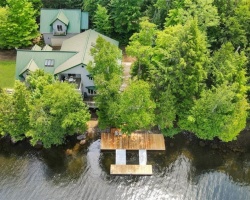How long is a Chain?

 In 1620, the clergyman Edmund Gunter developed a method of surveying land accurately with low technology equipment, using what became known as Gunter's chain; this was 66 feet long and from the practice of using his chain, the word transferred to the actual measured unit. His chain had 100 links, and the link is used as a subdivision of the chain as a unit of length.
In 1620, the clergyman Edmund Gunter developed a method of surveying land accurately with low technology equipment, using what became known as Gunter's chain; this was 66 feet long and from the practice of using his chain, the word transferred to the actual measured unit. His chain had 100 links, and the link is used as a subdivision of the chain as a unit of length.
Edmund Gunter, (born 1581, Hertfordshire, Eng.—died Dec. 10, 1626, London), English mathematician who invented many useful measuring devices, including a forerunner of the slide rule. Gunter was professor of astronomy at Gresham College, London, from 1619 until his death. Descriptions of some of his inventions were given in his treatises on the sector, cross-staff, bow, quadrant, and other instruments. In Canon Triangulorum, or Table of Artificial Sines and Tangents (1620), the first published table of common logarithms of the sine and tangent functions, he introduced the terms cosine and cotangent. Gunter’s practical inventions included Gunter’s chain. Gunter’s quadrant was used to find the hour of the day, the sun’s azimuth, and the altitude of an object in degrees. Gunter’s scale, or Gunter’s line, generally called the gunter by seamen, was a large plane scale with logarithmic divisions plotted on it. With the aid of a pair of compasses, it was used to multiply and divide. Gunter’s scale was an important step in the development of the slide rule.
In countries influenced by English practice, land plans prepared before about 1960 associated with the sale of land usually have lengths marked in chains and links, and the areas of land parcels are indicated in acres. A rectangle of land one furlong in length and one chain in width has an area of one acre. It is sometimes suggested that this was a medieval parcel of land capable of being worked by one man and supporting one family, but there is no documentary support for this assertion, and it would in any case have predated Gunter's work.
Muskoka was largely unsettled until the late 1760s the European presence in the region was largely limited to seasonal fur trapping, but no significant trading settlements were established. Canadian government interest increased following the American Revolution when, fearing invasion from its new neighbor to the south the government began exploring the region in hopes of finding travel lanes between Lake Ontario and Georgian Bay. In 1826 Lieutenant Henry Briscoe became the first white man known to have crossed the middle of Muskoka. David Thompson drew the first maps of the area in 1837, camped at the present-day Bala during the evening of August 13/14, 1837, and later possibly camped near present day Beaumaris.
The passages of the Free Grants and Homestead Act of 1868 brought opened the era of widespread settlement to Muskoka. Settlers could receive free land if they agreed to clear the land, have at least 15 acres (61,000 m2) under cultivation, and build a 16 by 20-foot (6.1 m) house.
According to the Surveyors' Measure the table is as follows:
- 7.92 inches = 1 link
- 25 links = 1 rod, pole or perch (all of equal length)
- 100 links = 1 chain or 4 rods
- 80 chains = 1 mile
- 625 square links = 1 square rod
- 16 square rods = 1 square chain
- 10 square chains = 1 acre
- 43,560 square feet = 1 acre
- 66 feet = 1 chain
Therefore 100 Links = 1.00 Chain and 1.00 Chain = 66.00 feet
A lot 20 chains (1320 feet) wide by 100 chains (6600 feet) deep contains 200 acres and a lot 50 chains (3300 feet) wide by 20 chains (1320 feet) deep, contains 100 acres.
Rectangular Lot System
This system used the township or parish as its largest component. They were then subdivided into a series of lots, each of uniform size (100-200 acres) and rectangular in shape. Lots would be arranged in rows and numbered consecutively. Each row or concession would also be numbered to form a grid system per township. You will find this system in Ontario, Qubec and in the Maritimes.













